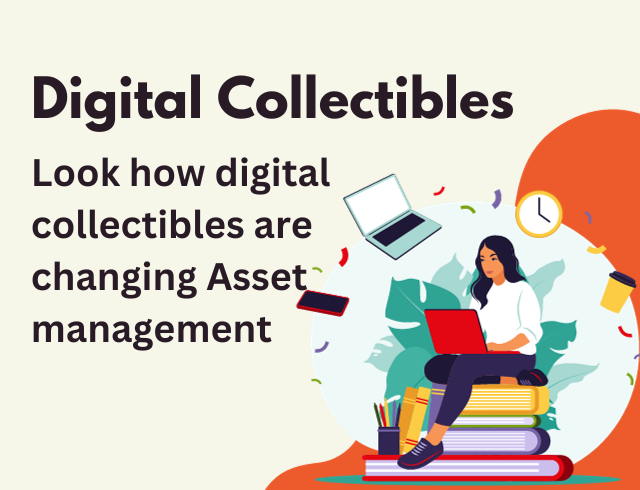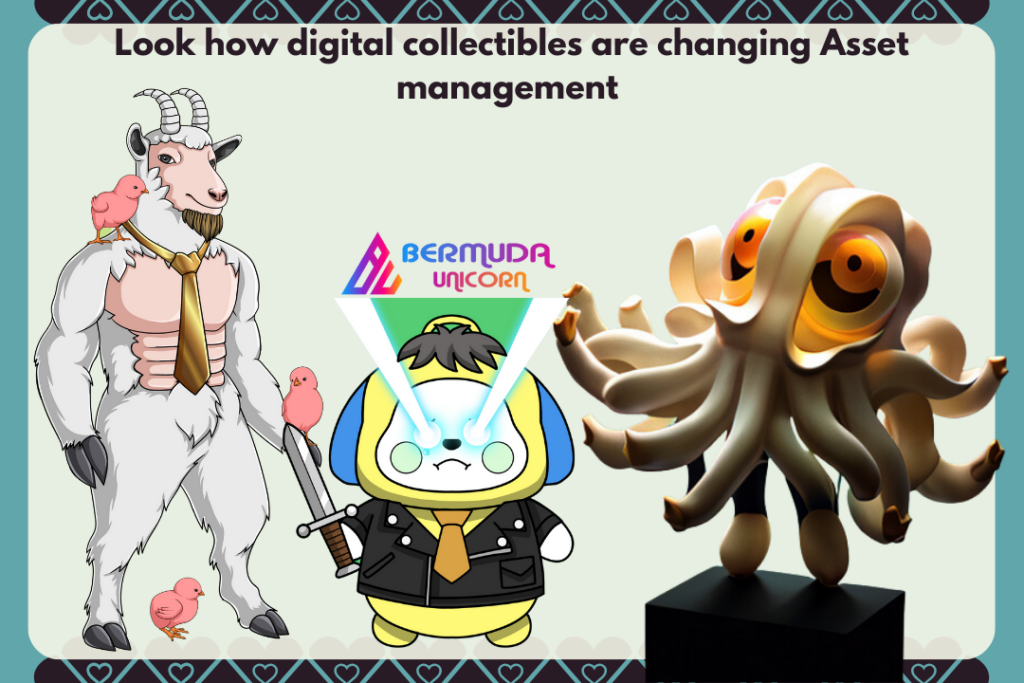![]()

Introduction:
In the fast-evolving landscape of finance and investment, the emergence of digital collectibles has added a new dimension to traditional asset management. Once confined to physical objects like rare coins, stamps, and baseball cards, collectibles have now transcended the tangible realm and gone digital. This transformation has given rise to a burgeoning market where blockchain technology. Also, plays a pivotal role, allowing for the creation, authentication, and trade of digital assets. In this blog post, we’ll explore how digital collectibles are unlocking new investment potential and reshaping the landscape of asset management.
The Rise of Digital Collectibles
Digital collectibles, often referred to as NFTs (Non-Fungible Tokens), have gained unprecedented popularity in recent years. NFTs serve as a testament to the ownership or verification of the uniqueness of an item or content on the blockchain. These digital assets can include anything from digital art and music to virtual real estate and in-game items. The use of blockchain ensures the scarcity, immutability, and traceability of these collectibles, making them a novel form of investment.
Diversification Opportunities
One of the key ways digital collectibles are changing asset management is by providing investors with new avenues for diversification. Traditionally, portfolios were constructed around stocks, bonds, and real estate. However, the inclusion of digital collectibles introduces a non-correlated asset class, reducing overall portfolio risk. Investors now have the opportunity to diversify their holdings with unique digital assets that may not be directly influenced by the fluctuations of traditional markets.
Democratization of Investments
Digital collectible have democratized the investment landscape by lowering entry barriers for a wider range of investors. Unlike traditional art or real estate investments that require significant capital, digital collectibles can be purchased in fractional amounts, allowing investors to participate with smaller budgets. This accessibility has opened up investment opportunities to a more diverse group of individuals, fostering inclusivity in the financial markets.

Liquidity and Market Efficiency
The blockchain technology behind digital collectibles has introduced a new level of liquidity to the market. Investors can buy, sell, and trade these assets with greater ease and speed compared to traditional collectibles. Smart contracts on blockchain networks enable instant transactions, reducing the need for intermediaries and enhancing market efficiency. This liquidity not only benefits individual investors but also contributes to the overall dynamism of the asset management ecosystem.
Innovations in Asset Tokenization
Digital collectible are also driving innovations in the concept of asset tokenization. This involves representing real-world assets, such as real estate or company shares, as digital tokens on the blockchain. This process facilitates fractional ownership, making it easier for investors to access and trade a diverse range of assets. As a result, asset managers are exploring ways to tokenize traditional assets, unlocking new possibilities for liquidity and investment strategies.
Challenges and Considerations
While the potential of digital collectible in asset management is promising, it’s essential to acknowledge the challenges and considerations associated with this nascent market. Issues such as regulatory uncertainty, market volatility, and environmental concerns related to blockchain technology must be carefully navigated to ensure the sustainable growth of digital collectibles in the investment landscape.
Conclusion
Digital collectible are reshaping the future of asset management by offering unprecedented opportunities for diversification, democratization, and innovation. As the market continues to evolve, investors and asset managers alike must stay informed and adapt to the dynamic nature of this emerging asset class. The intersection of blockchain technology and collectibles is unlocking a new era in investment, where the boundaries between the physical and digital worlds are becoming increasingly blurred. As we navigate this transformative landscape, the potential for unlocking investment opportunities through digital collectibles remains an exciting frontier in the ever-evolving world of finance.
Frequently Asked Questions (FAQs)
1. What exactly is a digital collectible, and how does it differ from traditional collectibles?
A digital collectible, or NFT, is a unique digital asset authenticated on the blockchain, differing from traditional collectible by existing in the digital realm. NFTs represent ownership and authenticity for digital content like art, music, or virtual items.
2. How do digital collectibles contribute to portfolio diversification?
Digital collectibles diversify portfolios by introducing a non-correlated asset class. Unlike traditional investments, the value of digital collectibles is often driven by unique digital factors, spreading risk and reducing the impact of market fluctuations.
3. Are digital collectibles accessible to investors with smaller budgets?
Yes, digital collectibles allow fractional ownership, making them accessible to investors with smaller budgets. This inclusivity democratizes investment opportunities compared to traditional assets that may require significant capital.
4. How does the liquidity of digital collectibles compare to traditional collectibles?
Digital collectibles offer higher liquidity due to blockchain technology and smart contracts, enabling instant and efficient transactions. This increased liquidity allows for easier buying, selling, and trading, creating a more dynamic market.
5. What challenges should investors be aware of when considering digital collectibles?
Investors should be mindful of regulatory uncertainties, market volatility, and environmental concerns related to blockchain technology. Staying informed about evolving regulations, managing risk in a volatile market, and addressing environmental impact are essential considerations for those engaging in digital collectible investments.
